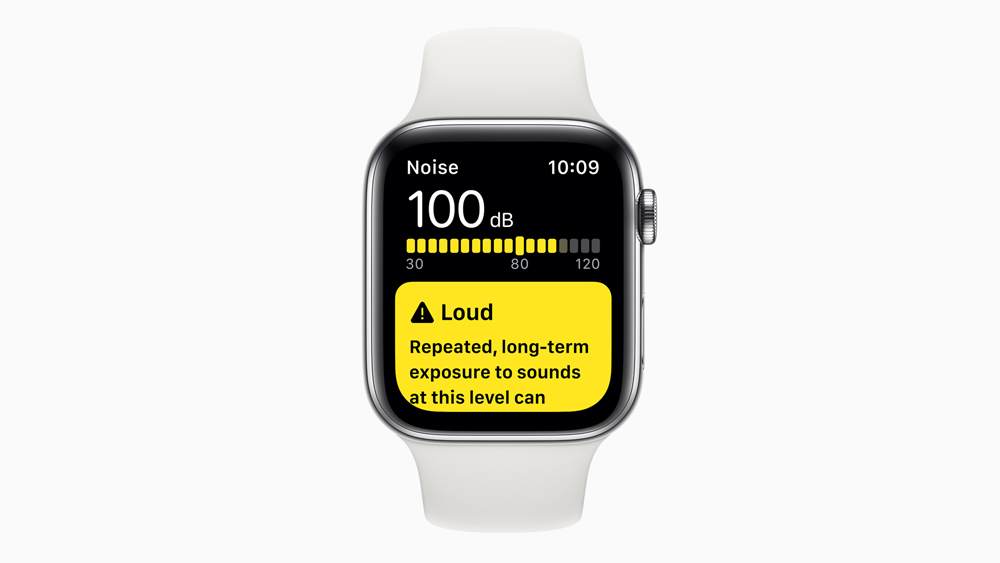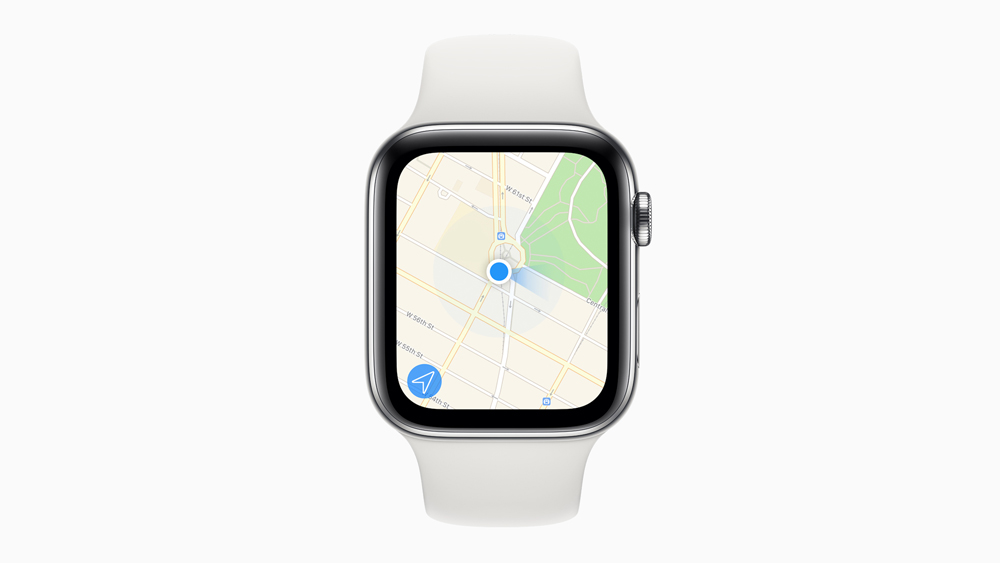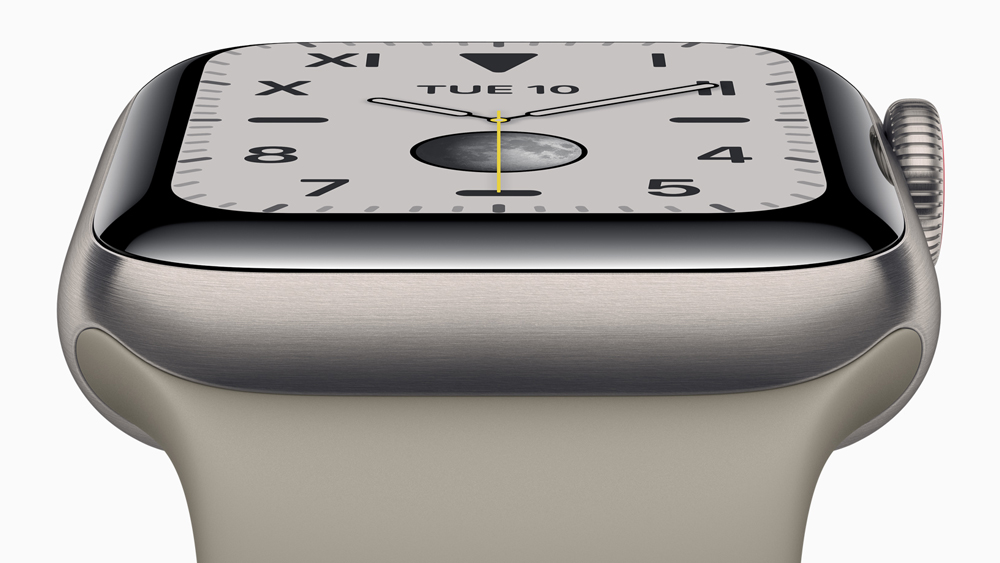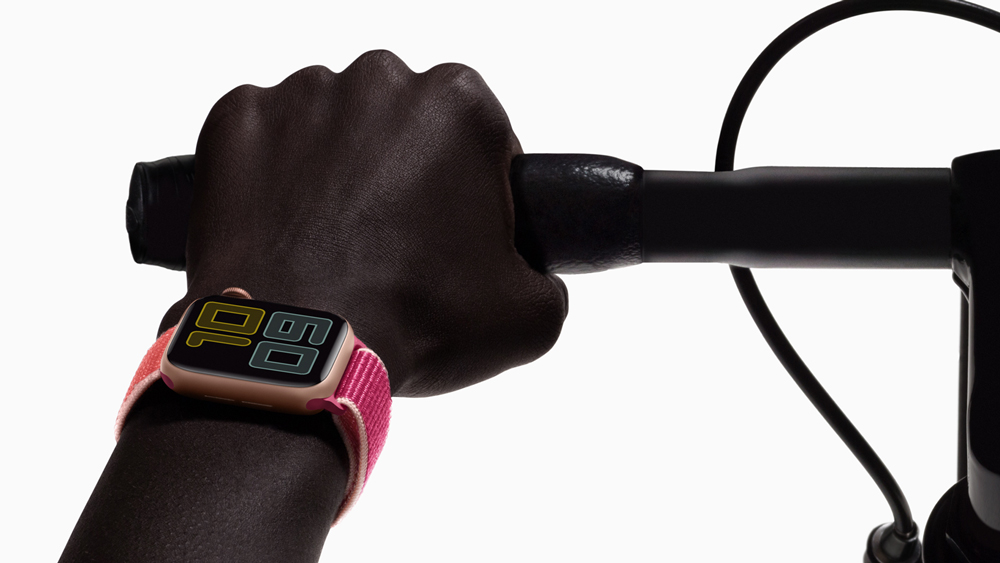Our Verdict
The only notable change the Series 5 offers over the Series 4 is an always-on screen. It’s something people have been clamouring for since the first Apple Watch, and it’s finally appeared on the Series 5, confirming the Apple Watch’s place at the top of the smartwatch tree. As long as you have an iPhone to pair it with, of course.
For
- Always-on screen
- Accurate heart rate tracking and ability to take an ECG
- Compelling activity tracking
- Useful smartwatch features
Against
- Always-on screen has limitations
- Battery life has taken a hit
- No native sleep tracking
- Hard to export workout data
You can trust Coach
Apple Watch Series 5 In-Depth
As an extremely keen runner who exercises six days a week, I’m not usually all that concerned about my steps, active minutes or calories burned. Yet when I strap on an Apple Watch, I become obsessed with filling the rings every day, to the point where on my one rest day each week, I’ll be found walking up and down the stairs in my house at 7pm to make sure those suckers are closed.
The three rings represent active calories burned, active minutes and hourly movement. The only target you can adjust is the calories burned – the red ring. The default is 500 calories but at the start of each week the Watch will notify you how you did last week and suggest a new target if appropriate.
The green ring will fill if you’re active for 30 minutes each day, while the blue ring will fill if you move at some point in an hour for 12 hours in total. You’ll get an alert at ten minutes to the hour if you’ve been sedentary for the first 50 minutes of that hour, so you can go for a quick walk to keep your streak going.
Fill your rings every day and you can feel pretty confident that you’re doing a decent job of at least maintaining your fitness, even if you might need to do a bit more to lose weight or hit other, more strenuous goals.
The new Watch software – watchOS 6 – also includes a feature in the Health app that can identify trends in your activity. During the test I found I was taking fewer steps this month than last but was also earning more exercise minutes, a combo achieved by doing a little more cycling. This adds more depth to Apple’s everyday tracking, but it’s not all that engaging. All I really cared about was filling my rings each day.
Sleep tracking remains a glaring omission on the Watch, but until it has a battery life that lasts at least a couple of days it would simply raise the problem of when to charge it, especially has it takes two-and-a-half hours to go from empty to full.
How Often Am I Going To Have To Charge It?
Each and every night, and possibly during the day as well. The Series 5 is listed as having the same 18-hour battery life as the Series 4 but, while with the latter I found that to be a conservative estimate, when using the Series 5 there were days when I was perilously close to running out of juice before bedtime – no doubt down to the always-on screen.
That’s especially the case if you use the Watch for long outdoor activities where the GPS is running and if you use it to listen to music as well. A 30-minute run with music playing on the watch cost me 11% of battery, while a two-hour run with no music knocked 20% off.
Generally it’s not something you should be too concerned with – I generally ended the day with 20-25% of battery left, whereas with the Series 4 I frequently had 45-50% left. That’s a trade-off I’m more than happy to make for an always-on screen. However, if you have a marathon lined up, on race day you’d have to be very careful indeed not to run out of juice during the run.
Running With The Apple Watch Series 5
One of the strengths of the Apple Watch is that you can pick from a range of apps to track your runs, including Strava, Runkeeper and my usual favourite iSmoothRun, which makes the device more like a traditional running watch, with customisable screens where you can choose the stats you want to see.
However, since the always-on screen only works with the native Workout app, that’s the one I used. This meant I could see the key stats on my run – up to five of them – without having to deliberately turn my wrist to activate the display.
The Workout app is basic but satisfactory. Apple has added more running stats since the first Apple Watch, including cadence and rolling pace, which gives you the pace of your last mile or kilometre. However, it’s still missing some basics, including lap pace – the average pace of your current mile or kilometre – which is something I find much more useful when pacing my runs.
It’s a perennial gripe, but you still can’t sync your runs to Strava or anywhere else from the Workout app easily. You can use the RunGap app to pull the data and send it to third-party apps, but you have to buy that app and others like it and it’s a whole lot more faff than simply having a “sync to Strava” option in the Workout app.
During runs I found the heart rate tracking exceptionally accurate, even when doing interval sessions. The reading barely lagged and matched up closely with a chest strap, even in cold conditions when other watches I’ve tried have struggled.
However, the same isn’t the case with GPS accuracy if you leave the Watch linked to your phone during runs. I found it consistently underestimated the distance covered, and it’s easy to see why when you look at the map of your activity afterwards – the corners are rounded off considerably and if you make a 180° turn the Watch will often miss a section of your run entirely. On a 30km run where I only made six turns in total it shortened the run to 29.17km, and losing at least half a kilometre on a run was pretty much standard until I disconnected the Watch from my phone during runs. As soon as I did that, the GPS accuracy was fine, matching up well with a Garmin watch linked to a calibrated footpod. If you care about GPS accuracy, I’d say leave your phone behind or turn off the Watch’s Bluetooth so it can’t piggyback on your phone’s GPS.
Overall, the Apple Watch doesn’t match up with what you get from a dedicated running watch – it’s harder to use during a run and doesn’t provide as much detail. It does a good enough job of tracking the sport for most people, but especially keen runners should still go to a company with more pedigree in this field like Garmin, Coros or Polar for a dedicated sports watch.
Working Out With The Apple Watch Series 5
There are no shortage of sports modes in the Workout app, although whether you choose fitness gaming, hunting or the “other” mode too you’ll be tracking time, heart rate and calories burned. Only running, cycling, swimming and walking add sport-specific stats like distance, speed or pace, and lengths (if you’re in the pool). Swimmers also get a breakdown of their session that includes automatic stroke recognition.
To really get the most out of the Watch when it comes to working out you need to dive into the App Store, where you’ll find hundreds of excellent options. This is especially the case if you want guided workouts, with the likes of Sworkit, Seven and Gymaholic providing strength sessions, and Pocket Yoga providing a go-to option for yoga. Runners can also download apps like Eastnine and Nike+ Run Club to find guided sessions, while swimmers have MySwimPro for the same.
Garmin, Polar and Fitbit all now offer guided workouts natively on their devices, but none of them can match the breadth of what’s available on the App Store.
The Apple Watch Series 5’s Heath Features
As with the Series 4 Watch you can take an ECG measurement using the Series 5, which can detect atrial fibrillation – an irregular heartbeat. You can set the Watch to check for an irregular rhythm itself periodically and notify you if it detects it, or open the ECG app to take the test whenever you want to. The Watch will also notify you if it detects that your heart rate is abnormally high or low. If you’re getting regular alerts, especially relating to an irregular heartbeat, it’s worth visiting your GP.
Apple has also introduced menstrual health tracking and a noise monitor with watchOS 6. The former allows you to log periods, as well as predicting your next period and your fertile window. The noise monitor constantly checks the decibel level of your environment and notifies you when it goes above a dangerous level of 90 decibels for an extended period. I found this feature a bit of an eye-opener in terms of how loud the London Underground was, with the noise levels on the Victoria Line reaching above 90 or even 100 decibels at times.

The Apple Watch Series 5’s Smartwatch Features
The Apple Watch is the most useful smartwatch I’ve tried. That starts with Apple Pay, which is partnered with all major banks and credit cards. Compare that with Fitbit Pay and Garmin Pay, which can only be used with one high street bank, Santander, along with a few challenger banks and third-party providers.
You can also load music and podcasts on to the Watch wirelessly. I have problems with the way this is done for podcasts – the Watch takes episodes from your phone automatically, rather than letting you transfer exactly what you want, and it’s far from flawless in doing this so I often wouldn’t have the episode I wanted available without my phone nearby. However, podcasts are there most of the time, and the Watch will sync how far you get through one with the Podcasts apps on your phone and laptop, so you can pick up where you left off on a different device.
Unsurprisingly, for music it’s Apple Music users who will get the most from the Watch, since they can sync playlists to it easily. Spotify users have to be content with controlling their phone using the watch, which is a shame as you can sync Spotify playlists with Garmin and Samsung wearables.
Aside from the always-on screen, a built-in compass is perhaps the biggest addition to the Series 5, and it makes following directions on the Watch far easier. Instead of a simple blue dot you get a dot plus an indication of which direction you’re facing. It’s a helpful addition to an important feature – being able to ask Siri for directions quickly and follow them on your wrist is definitely handy.

You can also store tickets, check your emails, monitor the weather, see your upcoming appointments, use apps like Citymapper and a whole lot of other things on the Watch. If you get the cellular watch you can do all of this without your phone nearby too, and even stream music from Apple Music too.
Where Can I Wear It Without People Laughing At Me?
It’s the Apple Watch, people will know what it is, and if they’re laughing it’s not because it looks bad. Perhaps you have something in your teeth? Apple has reintroduced a white ceramic version of the Watch to the range, alongside the aluminium, stainless steel and titanium (pictured, below) models, with aluminium the cheapest. There’s also a greater choice of straps than ever, so you’ll always be able to find one to suit the occasion.

Is The Apple Watch Series 5 Worth It?
If you have an Android phone then the Apple Watch won’t work for you, so absolutely consider buying something else. For iPhone users, however, there’s no other smartwatch that’s close to as good as the Apple Watch Series 5, aside from other Apple Watches – you can get the Series 3 for £200 less than the Series 5 and that’s a saving worth considering. The Series 3 has a smaller screen with no always-on option and a far less accurate heart rate monitor, but otherwise matches up well with the Series 5 and it even runs the latest watchOS software.
I’d also say that keen runners and triathletes probably won’t be satisfied by the detail and quality of the sports tracking on the Apple Watch. While you won’t find better smart features and design anywhere else, you can get superior sports tracking from Garmin’s smartwatches like the Vivoactive 4 and upcoming Venu, which has a bright AMOLED screen that comes reasonably close to matching the Apple Watch’s.

Nick Harris-Fry is a journalist who has been covering health and fitness since 2015. Nick is an avid runner, covering 70-110km a week, which gives him ample opportunity to test a wide range of running shoes and running gear. He is also the chief tester for fitness trackers and running watches, treadmills and exercise bikes, and workout headphones.

